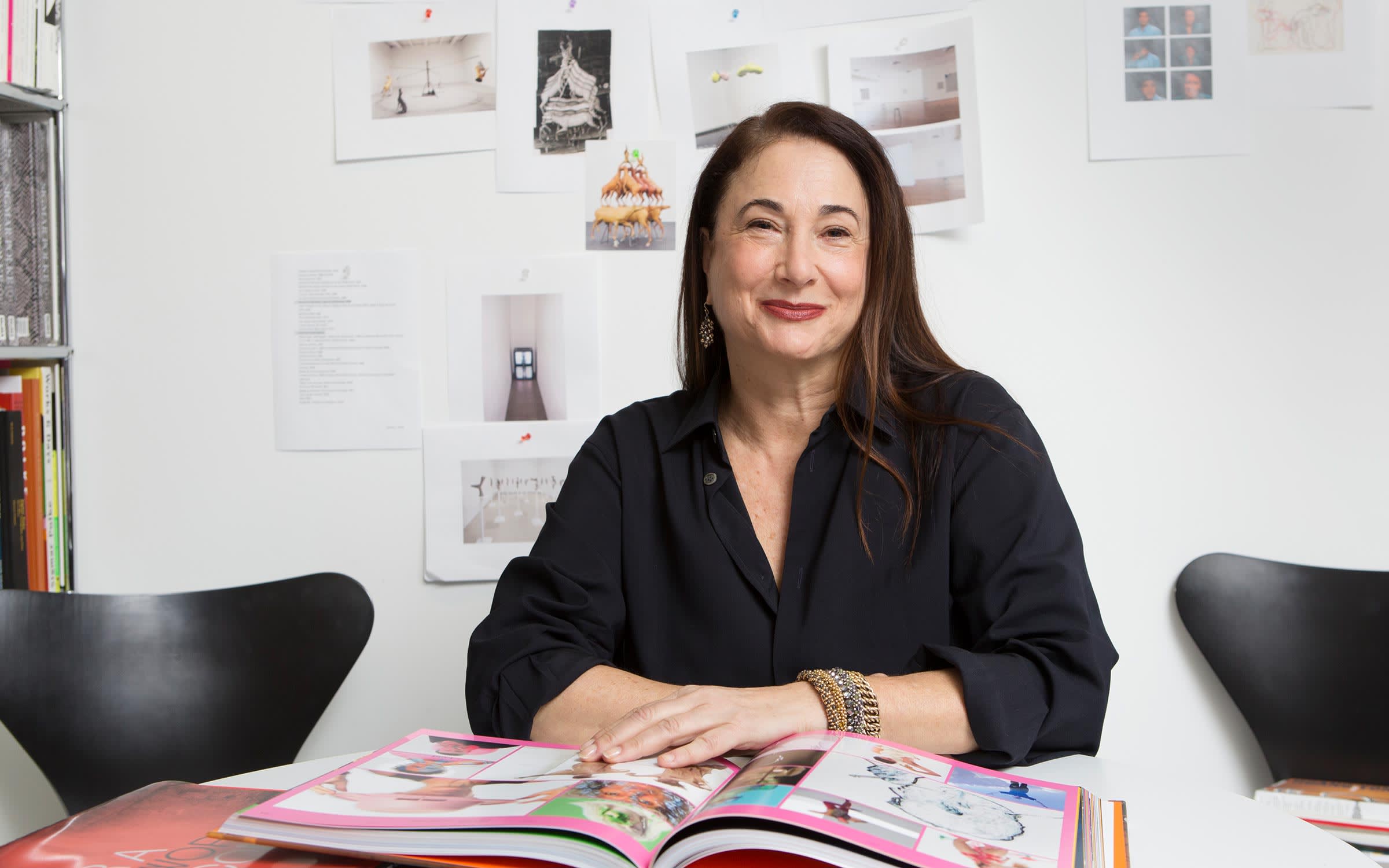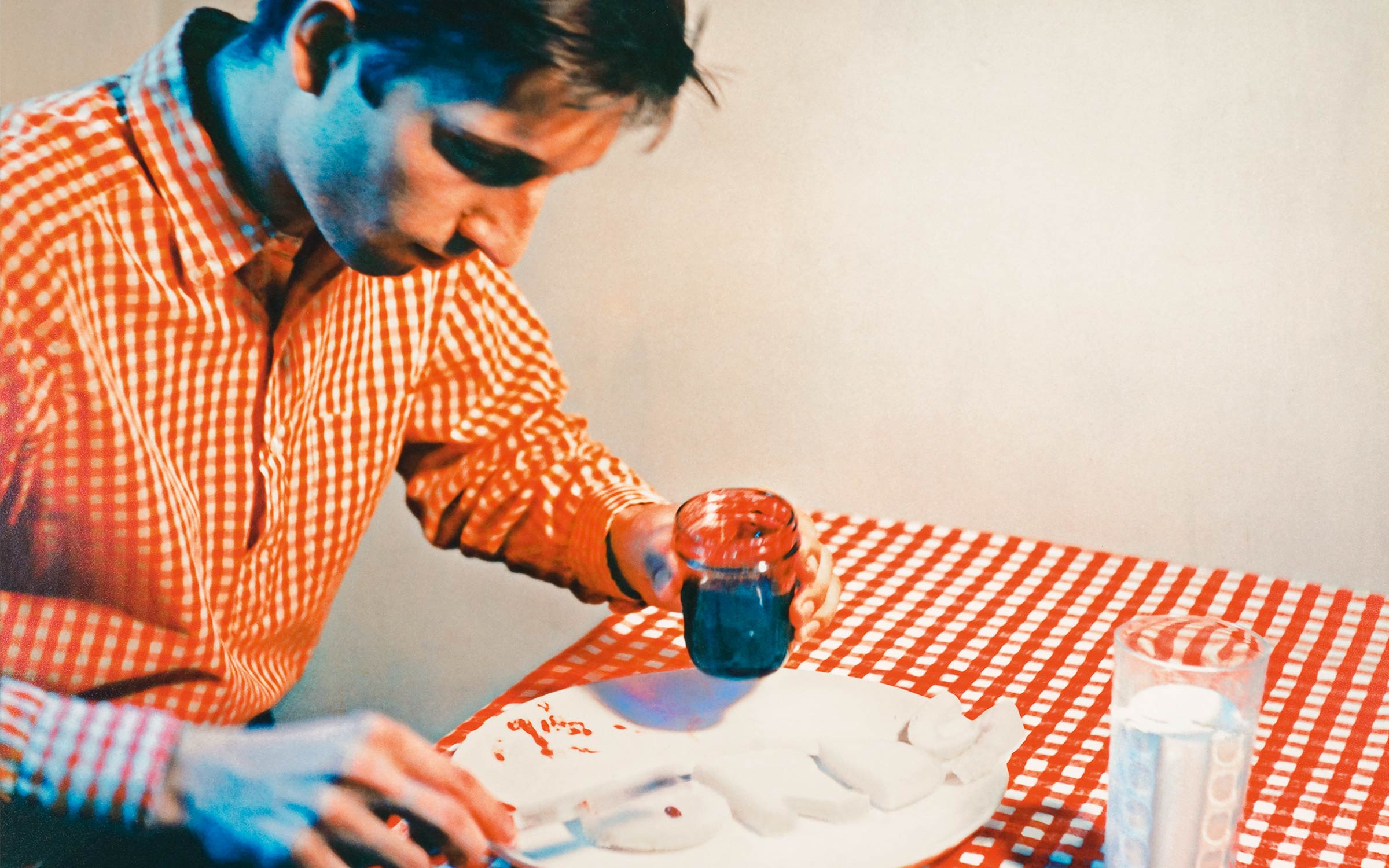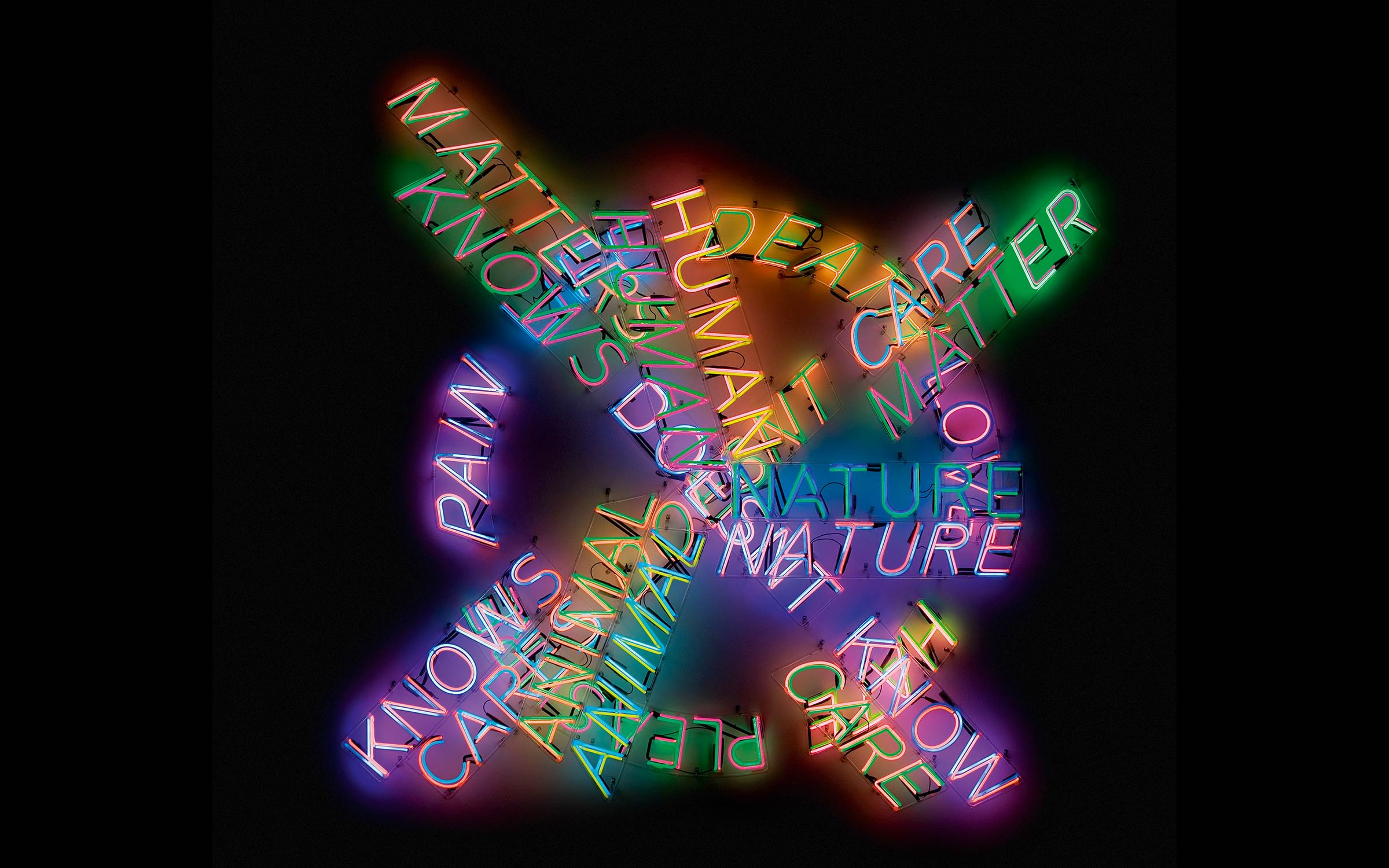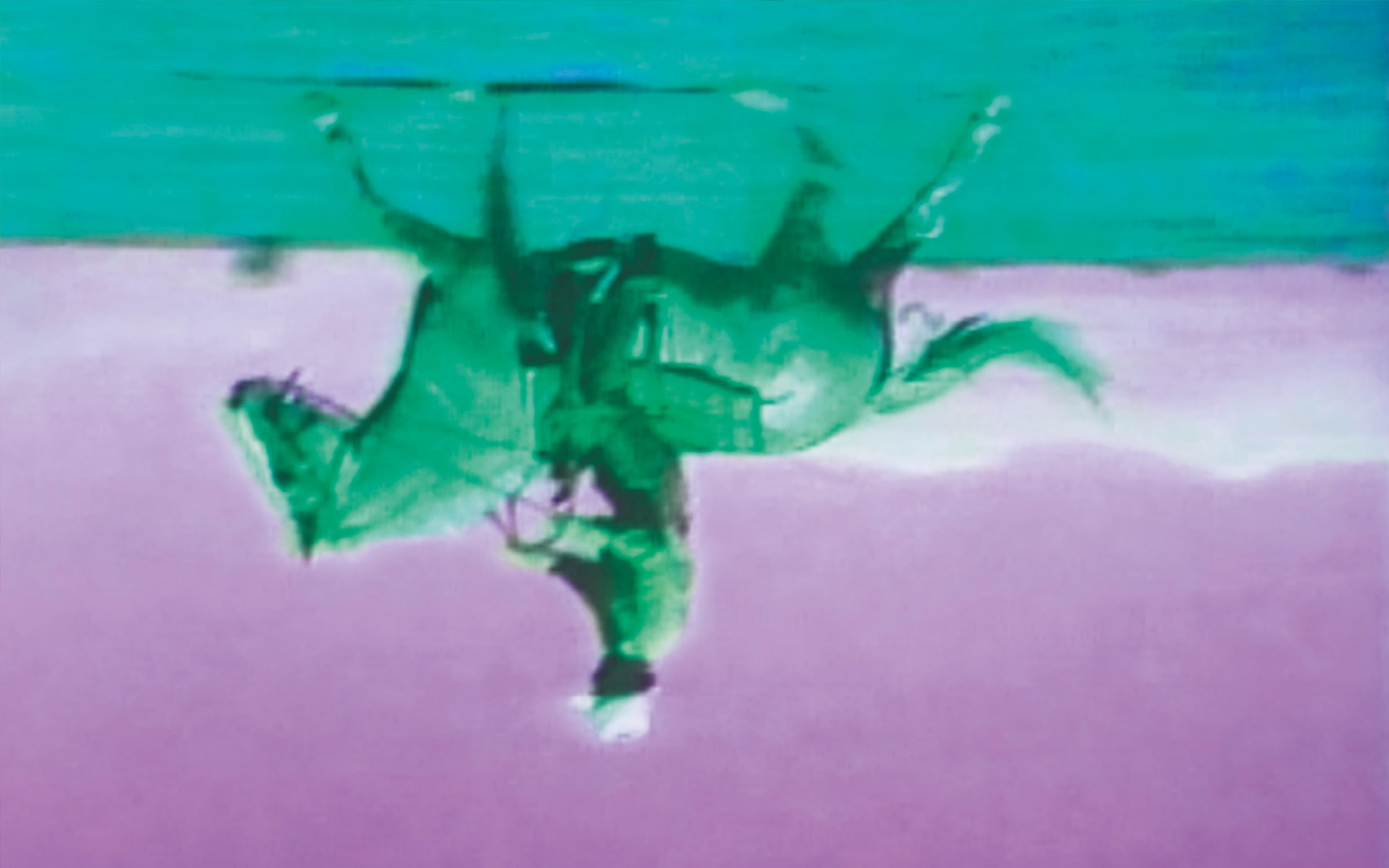Why the legendary conceptual artist Bruce Nauman is more relevant than ever
Curator Kathy Halbreich, the force behind the artist’s retrospective at Basel’s Schaulager, speaks to Art Basel’s Coline Milliard about her 25-year engagement with the artist and his work

Bruce Nauman is widely considered one of the most influential Western artists of the second half of the 20th century. And perhaps the most striking aspect of his practice is its versatility. Throughout his half-century-long career, Nauman has tackled an astounding array of media, from video and performance to drawing, sculpture, and installation.
With the exhibition ‘Bruce Nauman: Disappearing Acts’ at Basel’s Schaulager, curator Kathy Halbreich and her collaborators have thus performed a genuine tour de force: highlighting the crystal-clear coherence of Nauman’s oeuvre in a display that has gathered together more than 170 highly diverse artworks. Piece after piece, Nauman returns to simple, almost existential questions – the problem of being in the world, the nature of art-making, and the deceptive fluidity of language – all loosely articulated around the concept of disappearing.
The Laurenz Foundation curator and advisor to the director at The Museum of Modern Art in New York, Halbreich is a leading authority on Nauman. In the early 1990s, she curated a large Nauman retrospective that toured institutions including Madrid’s Reina Sofia, MoMA in New York, and Zurich’s Kunsthaus. In this exclusive interview, she talks to Art Basel’s deputy editor Coline Milliard about the joys and challenges of revisiting his multifarious practice 25 years on.
You have said that, to work on ‘DisappearingActs’, you had to forget what you knew about Bruce Nauman. How did you approach the project?
Having never worked twice with an artist on a project of this ambition, I didn’t know what to expect or how to proceed. I certainly didn’t imagine how stuck I would become, initially just circling around the familiar, dependent on the same thoughts as those developed in the early 1990s, when Neal Benezra and I were shaping the 1993-95 traveling retrospective that MoMA hosted. Early on, I often had the same paralyzing feeling I did when, as an aspiring artist after college, I would enter my studio in the morning to face a painting that was never as good as it had been the night before. Days became months. I just couldn’t find a new path through Nauman’s career.
I guess the question always is how to start, to maintain the faith, and to escape the immobility engendered by waiting for divine inspiration to jump-start invention. So, having learnt from Bruce’s own studio practice to just pay attention – to keep working and reading, even when the results are skimpy – that’s what I did. I pinned many images of his work to the wall beside my desk so I could catch them out of the corner of my eye, or stare at them between assignments. Living with Bruce became part of my daily life.

I was more than fortunate to have assistant curator Magnus Schaefer and curatorial assistant Taylor Walsh at MoMA to talk to all the time. They edited the literature on Nauman down to a manageable few linear feet. We also met every few months, for two or three intense days, with Schaulager’s chief curator Heidi Naef and curator Isabel Friedli. As we began to discuss the design of the Schaulager galleries and the placement of key works, ideas became more fluid with the movement of objects on the plan, which quickly created new connections among works from different periods. It was a bit like the moments in psychoanalysis when the associative ramble of a wandering mind lands on a correspondence that has never occurred before.
How do the exhibition’s scope and ambition differ from what you set out to achieve with the Walker Art Center retrospective that began in 1993?
Twenty-five years is a long time. Substantial new bodies of work have come into existence and we have passed from middle age to…whatever this stage of life is called. So it’s probably unsurprising that the checklist has grown from 60-something works to more than 170 this time. There are several immersive installations that demand huge gallery spaces – only one of the reasons why the Schaulager is a uniquely accommodating site for this exhibition. But there are also many more drawings, because I came to see qualities I must have missed the last time – the almost singular range of Bruce’s uses for and approaches to works on paper, from the fragile and precisely rendered early watercolors in our collections, to big painterly studies for neons, some peppered with hand-scrawled measurements, to muscular black and white graphics. Perhaps most significantly, there is a more expansive emotional dimension to the recent work, as well as a sense of permission that comes with maturity.
I remember how angry and abusive some found the last retrospective. From the beginning of this odyssey, I hoped we could create a more supple choreography for this exhibition, one that was more diverse and affecting. That didn’t turn out to be all that hard once we had sketched out the entire career. Wistfulness and an edgy dolefulness have appeared in Bruce’s work, alongside a penetrating, almost disinterested view of his own past. Part of the tenderness, beauty, and bravery of Contrapposto Studies [2015-16] is that we see the thicker-set and more tentative artist attempting the same physical sashay he executed as a lithe young man more than 45 years earlier. Even if one is not familiar with this loop of concerns, you feel the new uncertainty in his gait, observe his bulky torso and smile at the holes in his T-shirt. This is a man who has tamed any vanity. The cropping of the negative and positive imagery of his body holds back any sentimentality, but it has a gloriously complex appeal that you don’t find in his early work, which tends to exhibit more of a physical brusqueness.
I was also reminded of how key the number seven is to Bruce, appearing frequently in different guises in his work, from a very early da Vinci-like drawing to this seven- projection installation, which in many ways is about the fragility of human life and of our bodies. I couldn’t help but associate this number with the idea that the division of the body into seven sections represents a Renaissance idealization of human form. Bruce always is undermining the perfect and heroic.

When did you realize the notion of disappearance might be a suitable prism through which to consider Nauman’s oeuvre? How central has this conceptual tool been to your rethinking of his practice?
About midway through the process, after a summer of reading a crazy range of texts on topics that I thought might help me better decipher Bruce’s work, such as magic, Cézanne’s bathers and uncertainty, I began to realize there was a surprising continuity of concerns across the decades. It seems that the enormous variety of materials and techniques employed, leading to an almost unparalleled stylistic diversity, has obscured this for many of us. Of course, one concept is never large enough to entirely encompass the practice of an artist of Bruce’s intelligence and fearless experimentation. But I began to sense how disappearance has been a persistent prompt for his art, functioning as an act, concept, perceptual probe, magical deceit, and working method. Close relatives of disappearance – the absent, the void, and a sense of privation or omission – also appear. They are seen in holes the size of a body part [Collection of Various Flexible Materials Separated by Layers of Grease with Holes the Size of My Waist and Wrists, 1966], in the space under a chair [A Cast of the Space Under My Chair, 1965-68], in the self vanishing around a corner [Corridor Installation (Nick Wilder Installation), 1970], in the nocturnal goings-on of an allegedly vacant studio [Mapping the Studio, 2001], and in the recurring mental blocks that empty his sense of creative possibility. And, of course, many years ago, Bruce elected to absent himself from the coasts where art is most often debated and sold. Disappearance, then, is both a real phenomenon and a magnificently ample metaphor for channeling the anxieties of making art and of navigating the everyday world.
Nauman is a notoriously discreet artist, and he kept the exhibition-making process at arm’s length. What responsibilities and challenges – but perhaps also what opportunities – did that bring to your role?
I don’t know why people are surprised by his hands-off approach to curatorial affairs. Withdrawal removes him from the distractions of daily life and art-world nonsense so that he can concentrate on the immediate concerns of the studio. That being said, Bruce is an ideal collaborator. He involved himself in the planning precisely when and where we needed him, and he has an incredible capacity to concentrate and come up with the most efficient and modest solutions to problems that arise. His approach defines elegance.
What’s more, what better way could Bruce collaborate than to surprise us with two new works in the final run-up to the exhibition, one of which was finished during the two weeks he spent at Schaulager prior to the opening? It was so great to see the workshop and galleries turned into an extension of his studio. He was happy, but we were all pretty worn out by the day after the opening dinner. In fact, after he was home for a few days and his studio manager of many decades, Juliet Myers, asked him a question about another project, Bruce crisply replied, ‘I don’t want to answer any more questions for three years!’

Nauman moved from California to New Mexico in 1979. Since then, he has lived and worked on a ranch, breeding horses while maintaining his studio practice. The little-known video installation Green Horses [1988], which shows the artist training two of his own colts, is perhaps the piece in which these two activities are most closely intertwined. How do you read this work in the context of his oeuvre?
One of the luxuries of organizing a second retrospective is that I get to rectify my earlier mistakes! I had seen Green Horses when doing the research for the earlier exhibition, but thought it was dull. I was impatient, and maybe even misunderstood the persistent existential underpinnings of so much of Bruce’s work and the melancholy that grows out of that. Now I look at Green Horses and am riveted by the intricacies of the changes, by its balletic aspects and artfulness, by how delicately Bruce controls his animal, by his craft. I came to suddenly see the critical role of color in Bruce’s work, a previously unexplored topic that became an essay in the catalogue. Somehow, reappraising Green Horses enabled me to appreciate the beauty in much of the work. For example, despite the violence embodied in many of the neons – but especially the monumental One Hundred Live and Die from 1984 – I now understand how the complex chorus of rhythms and overlapping colors provided a way for Bruce to embrace beauty without softening his approach or intent.
What makes Nauman particularly relevant now?
Given the dispiriting politics of this moment and our seeming willingness to lose all privacy, what instruction could be more pertinent, imperative, than the one printed in reverse in Bruce’s famous 1973 lithograph PAY ATTENTION MOTHER FUCKERS? It just says it all. Throughout the process of organizing this exhibition, I was constantly confronted with the ways in which Bruce – who has a fantastic ability to make every new technology look natural and his own, from video and holograms to the latest 3D video effects – foresees the future, makes human frailties, obsessions, and dramas absolutely contemporary. He is rarely satisfied, and perhaps this is what makes him so present tense. While his work often makes visible the mutability or uncertainty of vision, his own is always clear and forward-looking. I learnt he is an even greater artist than I imagined when I began thinking about him again regularly four years ago. Maybe the greatest.
‘Bruce Nauman: Disappearing Acts’, runs until August 26, 2018, at Schaulager, Basel. The retrospective will then be on view at The Museum of Modern Art and MoMA PS1, New York, October 21, 2018-March 17, 2019.
The exhibition is curated by Kathy Halbreich, with Heidi Naef, chief curator, and Isabel Friedli, curator, of Schaulager Basel, and Magnus Schaefer, assistant curator, and Taylor Walsh, curatorial assistant, department of drawings and prints, The Museum of Modern Art.

